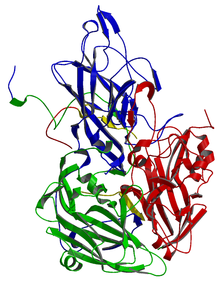
Seneca Valley virus

Senecavirus is a genus of viruses in the order Picornavirales, in the family Picornaviridae. Pig and maybe also cow serve as natural hosts. There is currently only one species in this genus: the type species Senecavirus A.' Senecavirus is a replication-competent oncolytic picornavirus. It has selective tropism for cancers with neuroendocrine features including small cell lung cancer (SCLC) and several pediatric solid tumors including retinoblastoma, neuroblastoma, and medulloblastoma. A Phase I clinical trial of Senecavirus in adults with neuroendocrine tumors showed that senecavirus is apparently safe to administer at doses up to 1E11 vp/kg.It has potential antineoplastic activity. Viruses in Senecavirus are non-enveloped, with icosahedral, spherical, and round geometries, with T=pseudo3 symmetry. The diameter is around 30 nm. Genomes are linear and non-segmented, around 7.3kb in length. Viral replication is cytoplasmic. Entry into the host cell is achieved by attachment of the virus to host receptors, which mediates endocytosis. Replication follows the positive stranded RNA virus replication model. Positive stranded RNA virus transcription is the method of transcription. The virus exits the host cell by lysis, and viroporins. Pig and maybe also cow serve as the natural host. The receptor for Seneca Valley virus has been identified as anthrax toxin receptor 1. Group: ssRNA(+) The complete genome sequence of senecavirus was completed in 2008. An infectious clone of senecavirus was reported in 2012.
